This QSR conducted an analysis of a prospective site's customers to inform the their decision to expand

Table of Contents
- Background
- Where Do Customers Live and Work?
- Where Are Customers Coming From and What is the Study Location's Trade Area?
- What are the Customers' Demographics?
- What are the Customers' Affinities to other Locations?
- What Actionable Insights did the Client Gather from this Study?
- About the Author
Background
A QSR with multiple locations across the US wanted to analyze customers at a prospective site to determine if that would be a good location for their business.
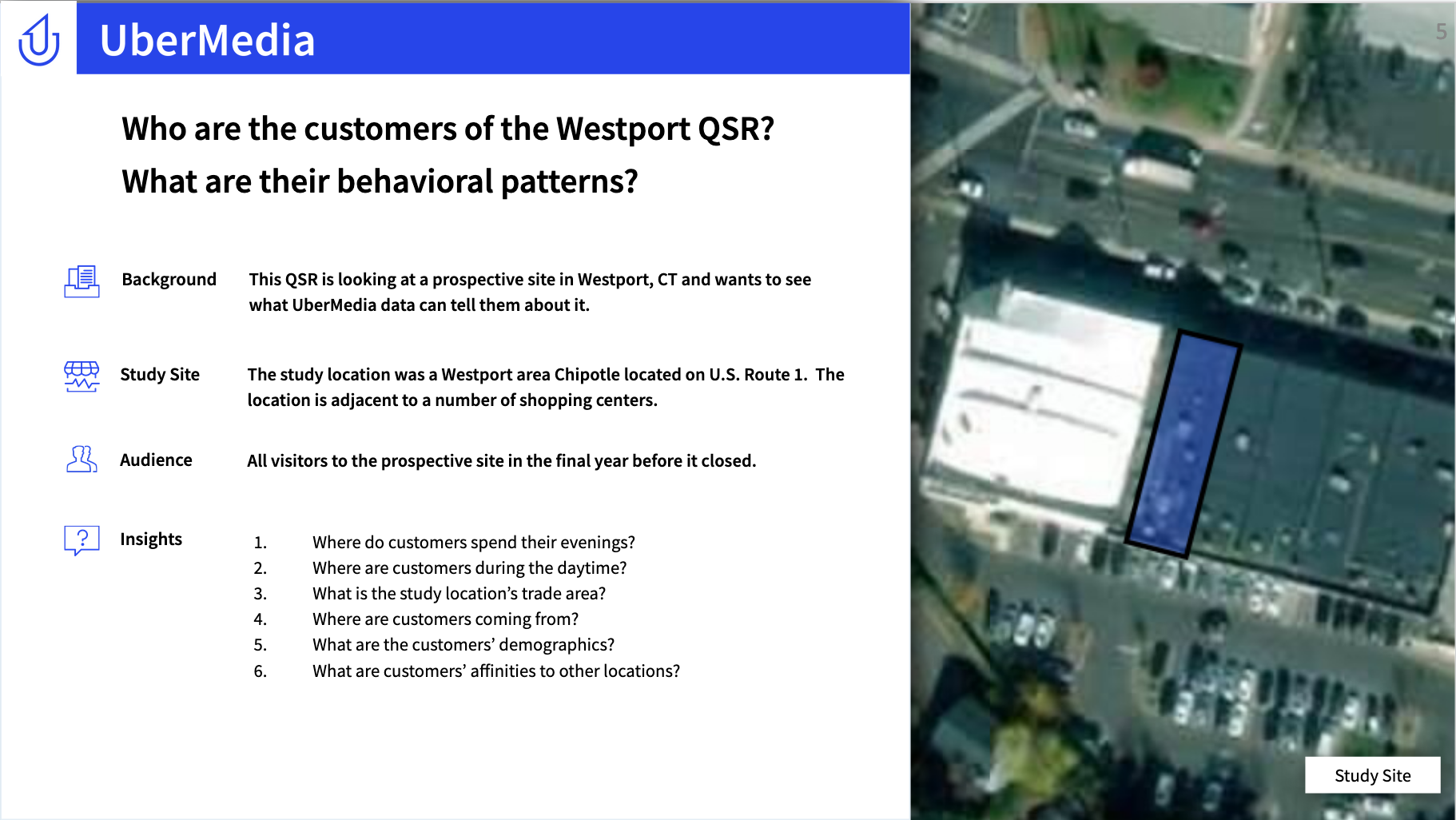
Reports used:
- Common Evening Location Common Daytime Location Distance Report
- Optimal GeoSpace Report
- Pathing X Report
- Demographics Report
- Location Affinity Report
Where do Customers to this Study Location Live and Work?
The home locations (as derived from our Common Evening Common Daytime Report) for visitors to this location lie along the two major highways in the area. There is a high density of visitors from the city of Bridgeport.
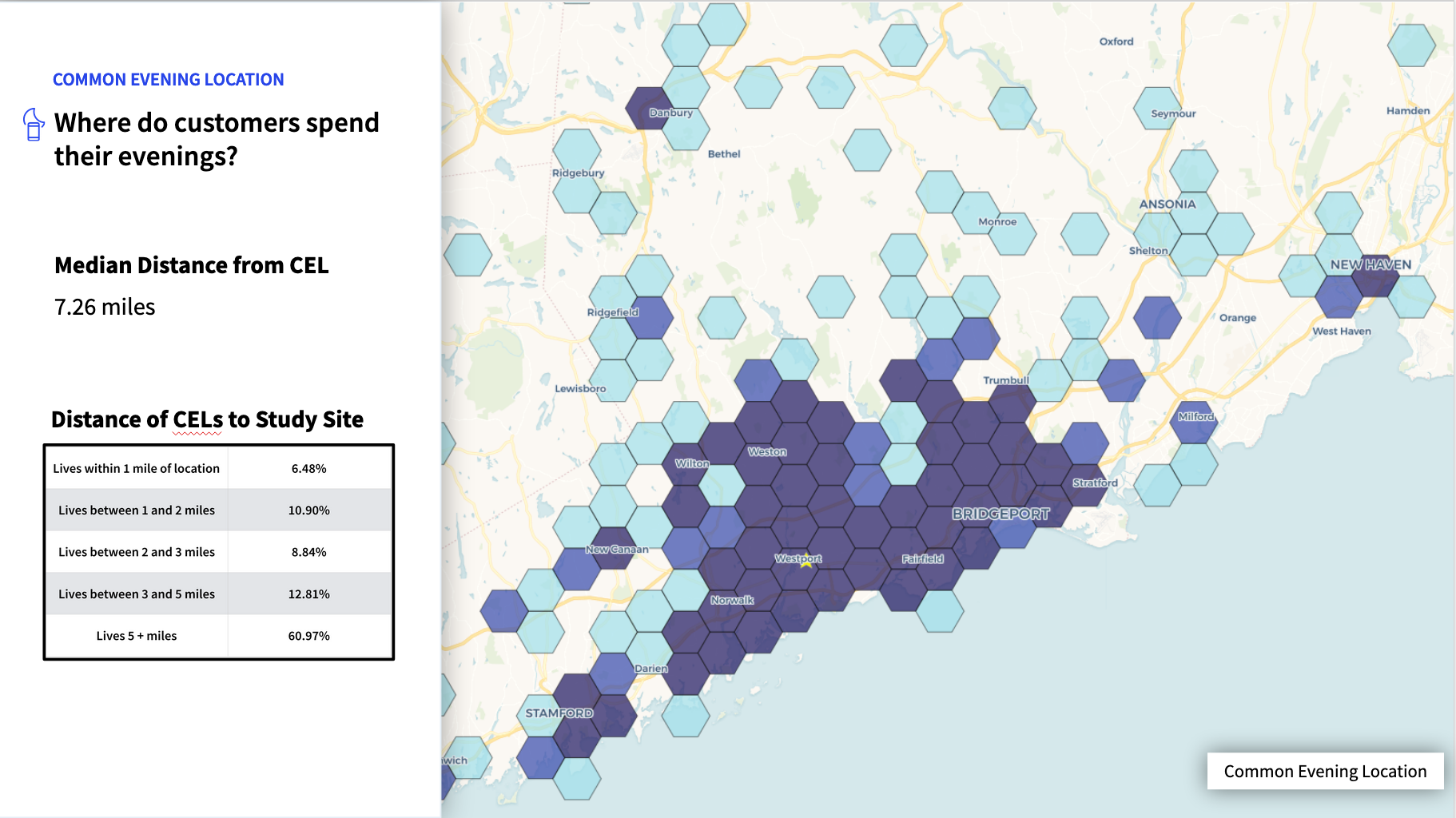
The smaller median CDL (common daytime, ie likely work location) distance indicates customers work closer than they live to the study site.

Where are Customers Coming From and What is the Study Location's Trade Area?
The pathing data shows that customers are predominantly using State Route 15 and U.S. Route 1 in traveling to and from the study site. This, coupled with the CEL/CDL data suggests that customers travel a good distance to reach this location.
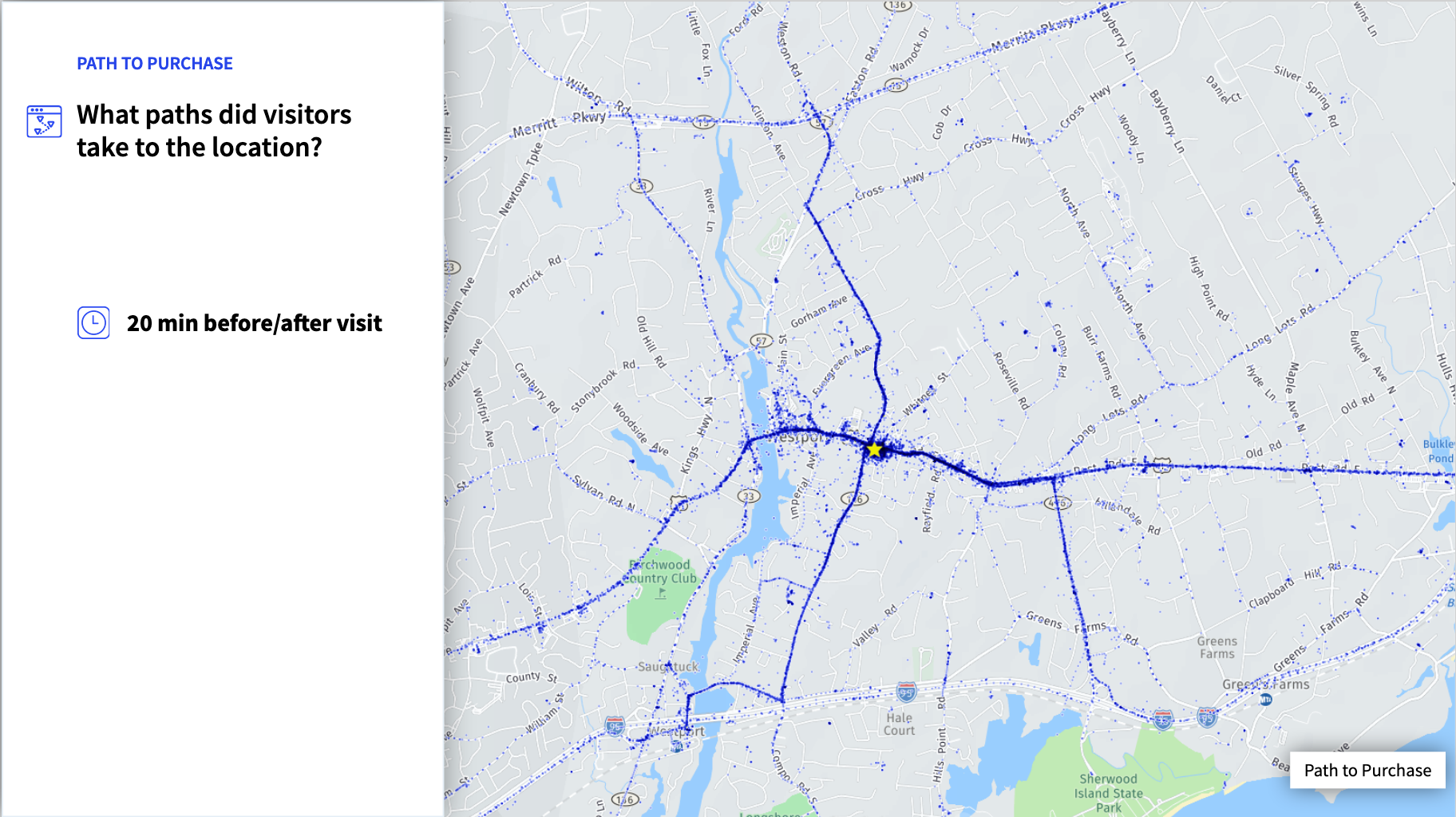
The Optimal GeoSpace for this location sits on the same roads, but gives a more definition to the range from which this location draws most of its customers. 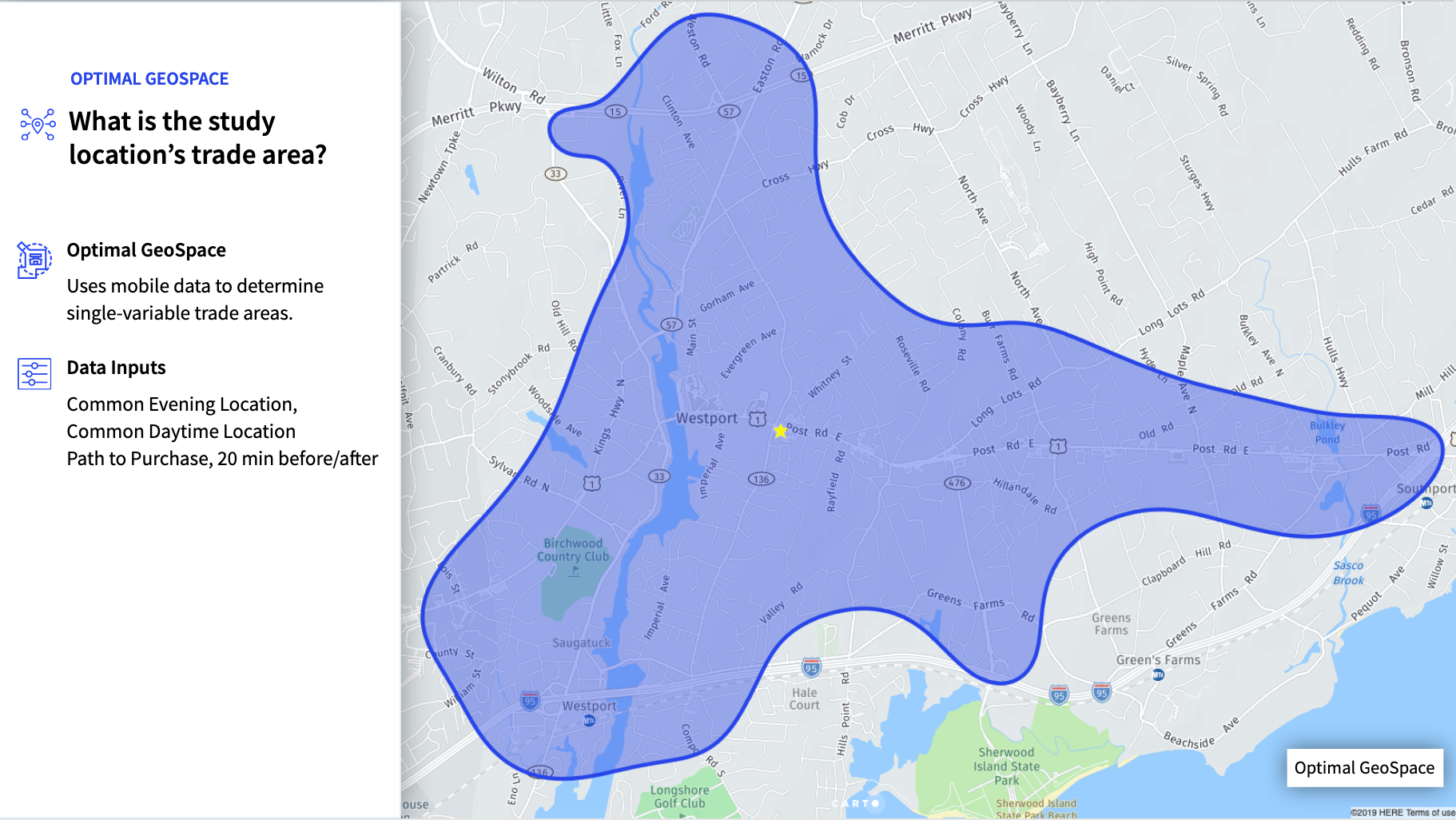
What are the Customers' Demographics?
Customers are probably white families with children. They come from areas of high income and hold advanced degrees.

What are the Customers' Affinities to Other Locations?
The customers generally have high affinities to upscale brands like Whole Foods, Soul Cycle and Bow Tie Cinemas.
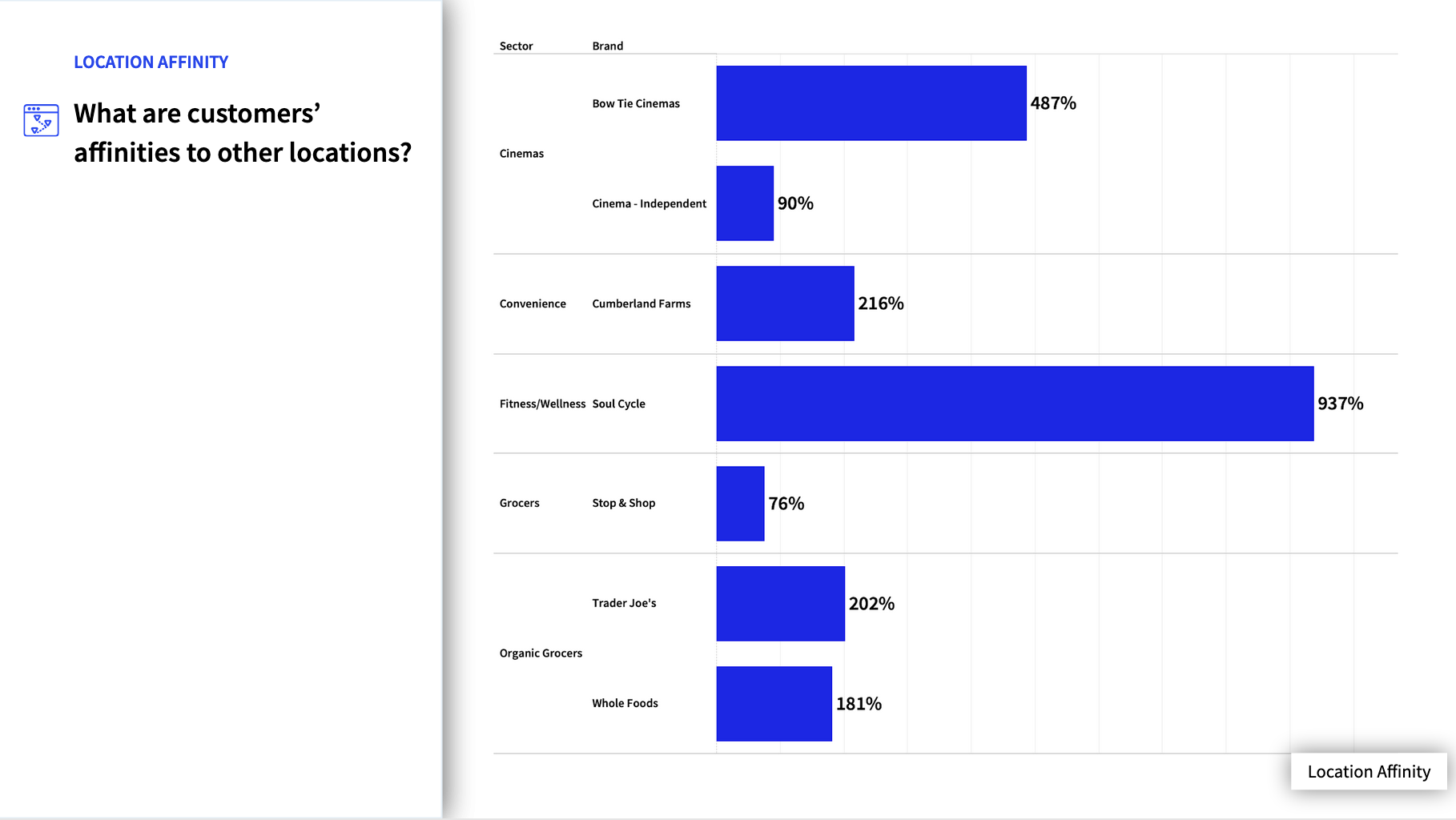
What Actionable Insights Did the Client Gather from this Case study?
The client learned from this study that this prospective location reaches a broad swath of southwest Connecticut. This location in particular sees customers with families that are white, educated and wealthy. The client may find that this is a demographic suited to their business. Human Movement Data is key for the client to be able to gather these insights and this is just one example in a variety of use cases.
Insights provided by Near in this study are aggregated and de-identified, not tied to any single device or individual. Near adheres to GDPR and CCPA and has been certified for privacy compliance by Verasafe, an independent third party.
About the Author
Porter is a leader in creating data solutions and bringing Human Movement Data to life.
